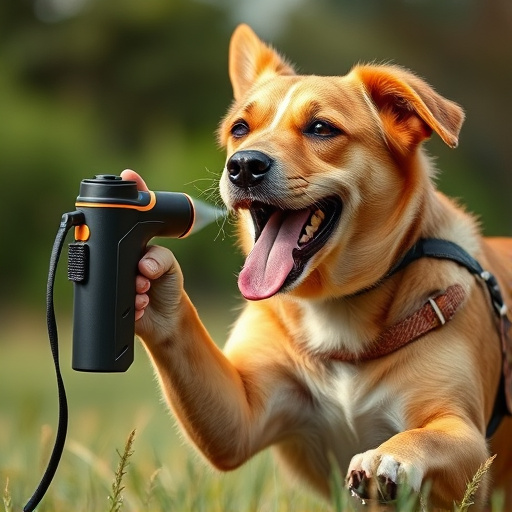Mace spray animal control effectiveness hinges on understanding spray concentration, range, duration, and proper application techniques. High-strength sprays with oleoresin capsicum (OC) target facial areas for swift escapes in smaller animals. For larger animals, maintain distance and spray legs and face to limit movement, considering wind direction. Prioritize safety by wearing protective gear, ensuring ventilation, maintaining distance during application, and knowing local laws. Regular training sessions using lifelike mannequins or bean-filled socks refine skills for calm, effective reactions in real encounters, promoting animal welfare without harm. Consider professional training for mastering mace spray techniques.
“Mace spray animal control, with its potent strength, offers a non-lethal solution for managing wildlife encounters. This article delves into the fundamentals of understanding mace spray power and its effectiveness against diverse animals. We explore practical techniques for various scenarios, empowering you to handle situations safely and responsibly.
Learn how to optimize these ‘How to Practice Mace Spray Techniques’ while adhering to legal guidelines, ensuring both animal welfare and your safety.”
- Understanding Mace Spray Animal Control Strength: The Basics
- Effective Mace Spray Techniques for Different Wildlife Encounters
- Safety Precautions and Legal Considerations When Using Mace Spray for Animal Control
Understanding Mace Spray Animal Control Strength: The Basics
Mace spray animal control strength refers to the force and effectiveness of pepper spray in deterring and subduing animals, particularly during wildlife encounters or pest control scenarios. Understanding this involves grasping key factors like spray concentration (measured in capicity or percent OC), range, and duration of effect. High-strength mace sprays contain a higher percentage of oleoresin capsicum (OC), the active ingredient responsible for the burning sensation and temporary blindness it causes.
Knowing how to practice mace spray techniques is crucial. This includes understanding proper application methods, such as aiming for facial targets like eyes, nose, and mouth, where OC can quickly neutralize the animal. Training sessions should also cover safe handling procedures, as mace spray can be hazardous to humans if misused. Regular drills help in developing muscle memory, ensuring that in high-stress situations, individuals respond swiftly and accurately, maximizing the effectiveness of the spray while minimizing risk to themselves and bystanders.
Effective Mace Spray Techniques for Different Wildlife Encounters
When it comes to using mace spray for animal control, understanding effective techniques is crucial. Different wildlife encounters demand varying approaches to ensure safety and minimize harm. For small mammals like squirrels or raccoons, aim for the face and eyes—these sensitive areas will cause them to flee quickly. Practice makes perfect; set up a safe target practice area with lifelike wildlife mannequins (or even old socks filled with beans) to hone your aiming skills.
For larger animals such as deer or aggressive dogs, a different strategy is required. Maintain a safe distance and spray towards the legs and face, creating a barrier that limits their movement. Keep in mind that wind direction plays a significant role; always have an escape route planned and ensure the spray doesn’t blow back onto you or bystanders. Regular training sessions will help you react calmly and effectively during actual encounters.
Safety Precautions and Legal Considerations When Using Mace Spray for Animal Control
When utilizing mace spray for animal control, prioritizing safety is paramount. Always wear protective gear, including gloves and eye protection, to minimize exposure to the spray. Ensure proper ventilation in the area to prevent inhalation of the aerosol. Keep a safe distance from both the target animals and bystanders during application, as the spray’s reach and impact can vary. Familiarize yourself with local laws and regulations regarding the use of mace spray, as permits or specific training might be required. Understanding the legal framework ensures compliance and helps maintain public safety.
Proper handling and technique are crucial to effective animal control without causing undue harm. Learn how to hold and activate the spray canister correctly. Practice aiming techniques to ensure the spray reaches the intended targets while minimizing off-target impact. Targeting specific areas like the face or eyes can quickly deter aggressive animals, but it requires skill and precision. Consider seeking professional training to master these mace spray techniques, ensuring both animal welfare and personal safety during control efforts.
Mace spray animal control, while powerful, requires careful consideration and responsible usage. By understanding the strengths and limitations of this tool, learning effective techniques tailored to various wildlife encounters, and adhering to strict safety precautions and legal guidelines, individuals can safely and humanely address unwanted animal interactions. Practicing these mace spray techniques is a crucial step towards becoming a more prepared and knowledgeable animal control professional or enthusiast.
